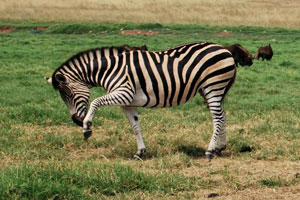
A ZIMBABWE Parks and Wildlife Management Authority (Zimparks) top official has disclosed that most of the country’s wildlife sanctuaries are unsafe for animals and human beings as they are heavily infested with landmines planted by the colonial regime during the liberation war.
VENERANDA LANGA SENIOR PARLIAMENTARY REPORTER
Zimparks acting conservation director Geoffreys Matipano made the remarks when he appeared in Parliament yesterday.
Matipano told the Parliamentary Thematic Committee on Peace and Security that the most affected were Gonarezhou National Park in the Lowveld, Zambezi and Victoria Falls national parks in Matabeleland North province.
“The Parks estate covers 13% of the country – and the size of the area that is affected by landmines in Matabeleland North at Victoria Falls National Park (which) is 26,9 square kilometres, Zambezi National Park 17,6 square kilometres and at Gonarezhou National Parks a belt covering 70 kilometres from Crooks Corner to Sango Border Post is affected,” Matipano said.
“Landmines tend to move positions when soil shifts through soil erosion, and they shift especially during the rainy season into paths used by animals and people.”
Matipano also said the department was battling to contain the scourge of poaching, adding that the fight was being complicated by use of sophisticated equipment by poachers.
“We have problems with both local and foreign poachers from Zambia and Mozambique. Some of them work with locals who assist them to get into the protected areas. Their methods of poaching are now sophisticated and they are armed with heavy rifles as well as silencer weapons to reduce noise when they shoot. They also now come in large groups.”
- Chamisa under fire over US$120K donation
- Mavhunga puts DeMbare into Chibuku quarterfinals
- Pension funds bet on Cabora Bassa oilfields
- Councils defy govt fire tender directive
Keep Reading
Matipano said lack of resources had frustrated efforts to curb poaching activities.











